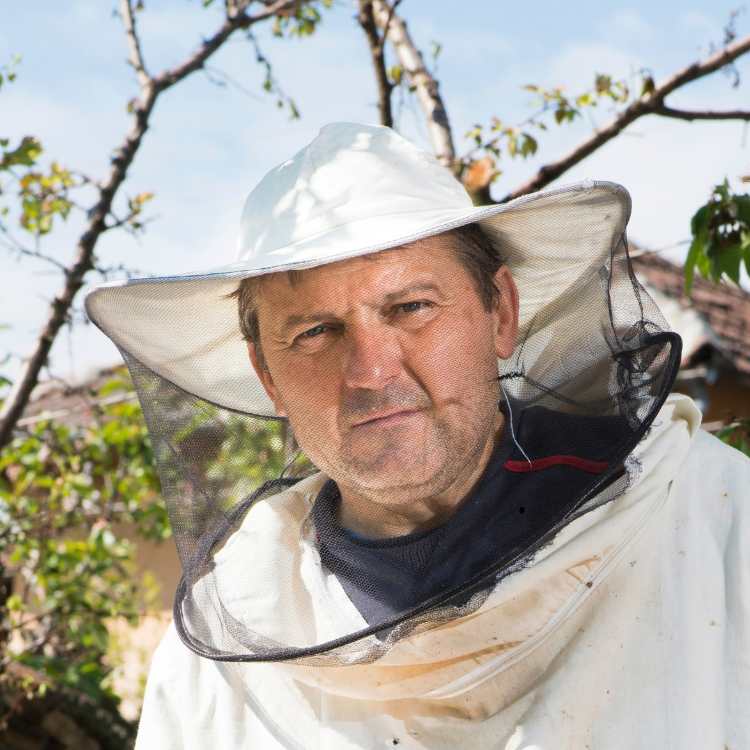The diversity of bees has always been fascinating. Even more, is the active role that they play in our ecosystem. However, one species often falls under the radar and those are particularly blood bees. Scientifically known as sphecodes, these intriguing bugs are known for their vivid red and black color. And unlike the bees that we typically see outdoors, blood bees live by an entirely different set of rules. Let us take a closer look at the world of blood bees and learn more about these buzzing insects.
What are blood bees?
Blood bees, or Sphecodes, are part of the Halictidae family, which includes many varieties of sweat bees. The name of the blood bees is derived from the distinctive red or red and black abdomens. These range in size from about 4.5 mm to 15 mm, making them classified as a medium sized bee specie These bees are found almost everywhere around the globe except in Australia and encompass over 300 species.
Due to their unique appearance, many confuse blood bees with outer species. Their slender, hairy and wasp colored bodies cause many to confuse these with the red-girdled Mining Bee. However, both these species are wildly different and the blood bees have a completely different behavior and lifestyle that sets them apart.
The cleptoparasitic nature of blood bees
Unlike honeybees or bumblebees that gather pollen and nectar for their colonies, blood bees are cleptoparasites. In simple terms, blood bees rely on other bees such as the Andrena, Halictus or Colletes genera to provide shelter and food for their offspring.
Experts find this parasitic behavior fascinating and complex. It is noted that female blood bees generally infiltrate the nest of host bees. Once they are inside, they start to destroy the host eggs, lay their own eggs in the cells and seal them back up. This behavior ensures that the larvae will have enough food when they hatch.
Another interesting fact to note is that blood bees are often bold enough to enter the host's hive even when the host is present. Experiments and observations from experts have revealed varying responses from the host, ranging from aggressive defences to complete tolerance.
Survival and conflict
The interaction between the blood bees and the host can lead to dramatic confrontations. Fights break, stings exchange, bodies drop. Sometimes, these skirmishes result in the death of either the blood bee or the host. If the blood bees are successful, they take over the nest.
It is also interesting to note that blood bees often adapt their parasitic behaviour based on the host species. While most solitary bees are targeted, some have been observed infiltrating eusocial species, provided the host is in a solitary nesting phase. A single blood bee species may also parasitize multiple host species, which targets up to 17 different species.
Foraging behaviors of blood bees
While many might think that blood bees do not forage due to their parasitic nature, it is not true. Blood bees still have to forage nectar to sustain themselves. They are polylectic, meaning that they visit a wide variety of flowers to gather pollen instead of relying on a single plant family. Blood bees are often spotted flitting around dandelions, thistles, roses, and umbellifers like wild carrots and more. This foraging behaviour is critical to the ecosystem since blood bees help in pollination. Even if they don’t actively gather pollen for their young, their role in pollination cannot be neglected. It is this duality that makes blood bees an intriguing part of the pollinator community.

Busting misconceptions
Because of their parasitic nature, it is quite common to believe that blood bees are harmful and unwelcoming towards humans. However, this perspective misses their importance to the ecology. Like most other bee species, blood bees are not harmful to humans. A myth busted.
Also, blood bees are known to follow a different societal structure when compared to bumblebees or honeybees. Blood bees are critical for population control of other ground nest bees.
A healthy presence of blood bees is also a reflection of the health of the local biodiversity. Their existence is proof that their host species are also present in the area. In turn, these host species rely on abundant floral resources and undisturbed habitats. As such, spotting a blood bee can often signal towards a thriving environment.
Protecting blood bees and their habitats
We are the advocates of all pollinators, even those with unconventional lifestyles. Support them by protecting their habitats and, more specifically, the hosts on which they rely. Ground nesting bees often lead undisturbed and loose soil to build their nests. Avoid excessive tilling or the use of pesticides, as these can disrupt the fragile ecosystems.
Another excellent option is to plant a diverse range of native flowers to support these bees. And while blood bees do not collect pollen for their young, they need pollen for their own sustenance. Plus, this also makes sure to create a steady supply of food for their host species.
Why blood bees matter
Blood bees are a testament to the incredible diversity and adaptability of bees. Their parasitic life might seem harsh, but it is important to remember that this is a natural part of the ecosystem that has evolved over several millennials. So, the next time you see a flash of red and black near a flower, take a moment to appreciate the fascinating life of these furry pollinators. Another stark reminder of the intricate web of life that connects us all.
Found this piece fascinating? Learn more about bees and beekeeping here.




